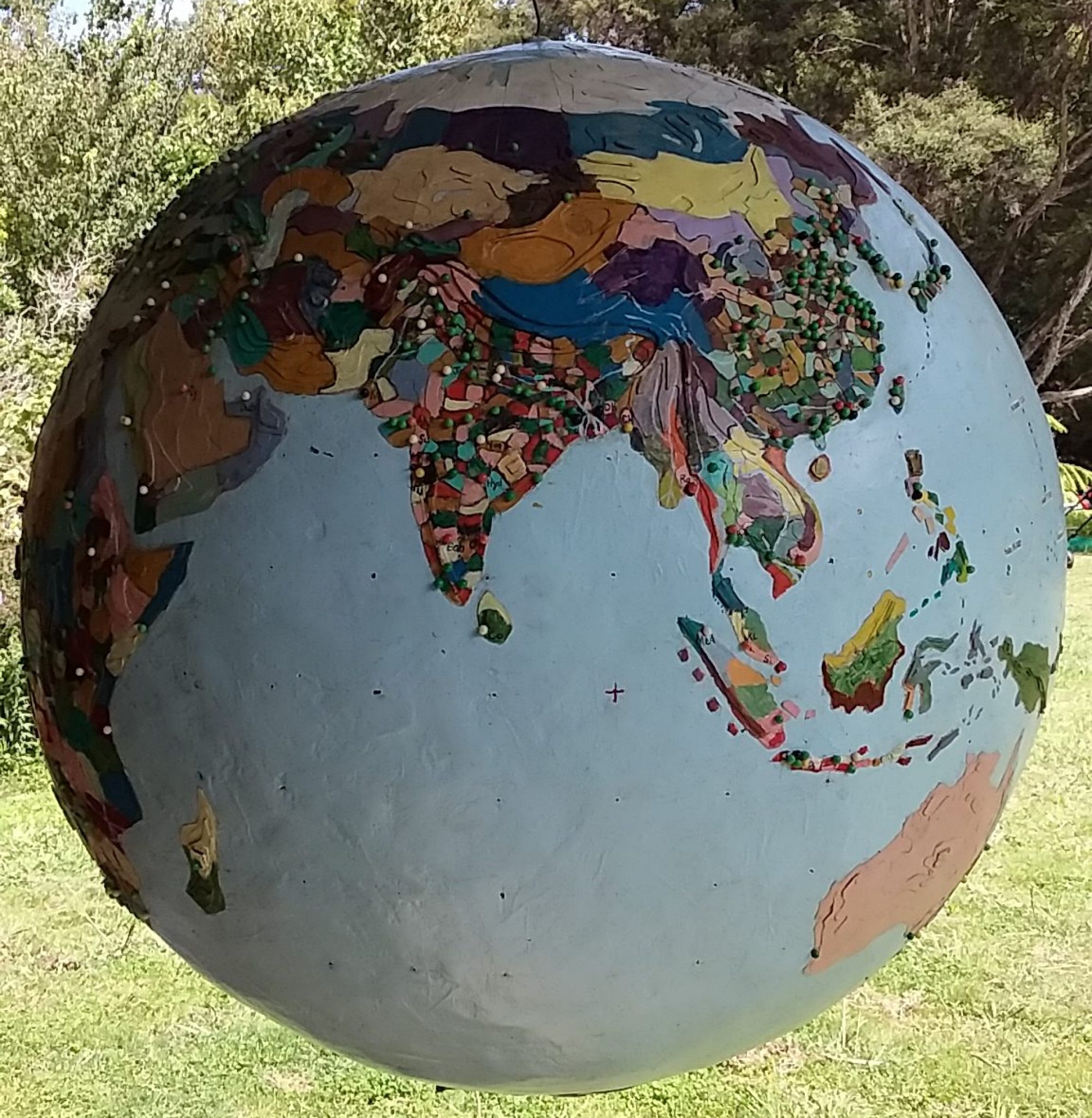Living without domination
Millisphere (noun): a discrete region inhabited by approximately 1000th of the total world population. Around seven million people but anywhere between 3.5 and 14 million people. A lens through which to examine human geography.
When I originally built The Millisphere, pictured, as part of a paper on the philosophy of science, it forced me to look at where people live and in the process I unearthed stories to draw on for millisphere columns.
Iceland (population 350,000) is too small to qualify as a millisphere; its nearest neighbour Greenland (56,000) has even less. It is self evident that hot/sunny countries (with lots of rainfall) can support large populations so it is not surprising that it requires all of the land and islands within the Arctic Circle, and beyond, to scrape together 3.5 million to form the millisphere I call Northland – shown here in white.
Greenland at 70 percent leads the world in the use of renewable energy (mostly hydroelectric) and 88 percent of its population are Inuits whose “nation” extends around the north of Canada, the state of Alaska and crosses the Bering Strait into the Russian Federation. There are 150,000 Inuits in total who, in 1982, for the first time, gathered at the “Inuit Circumpolar Conference.” Other hunter/gatherers such as the Nenets in Russia and the Saami in Norway and Finland complete the circle.
There is logic in considering a unique millisphere that has two months when the mid-summer sun never/hardly sets and whose inhabitants are collectively facing the impact of global warming; caused, to greater or lesser extent, by the other 999 millispheres.
The reality though is that the Arctic is divided by boundary lines radiating from the North Pole. Boundaries imposed by “Great Powers” not by the Northland migratory hunters and gatherers who live “everywhere and nowhere.”
The effects of 19th century colonialism and 20th century militarism were profound and universal for the inhabitants of Northland many of whom transitioned from hunters to wage earners. Their forests were destroyed, rivers polluted, pasturelands flooded and herds dispersed. Their health records are now poor and unemployment is high. Domestic crime, drunkenness and suicide are three or four times the national average of their respective countries.
In 1925 Canada was the first to extend its borders northward, followed quickly by the USSR, Norway, USA, Sweden, Finland, Denmark (through Greenland) and finally Iceland. The Cold War ramped up the military impact on Northland.
In 1942 the US established an air force base at Goose Bay in northern Canada as a stop off point on the flight to Europe and then converted a vast area of “empty” land into a “Tactical Fighter Weapons Training Centre” (bombing range). Paranoid that the USSR would send nuclear missiles over the pole the US deployed radar stations and invited its NATO allies to practice low-level flying over Innu land at Goose Bay. By 1990 there were around 40,000 annual “practice flights” and the Innu caribou herd had halved since the invasion began.
Not be outdone the Soviets established the Rogachevo air base on the far north island of Nova Zembla, shifted off all the native Nenets in 1957 and used the island to test nuclear weapons. In 1961 they dropped the “Tsar Bomba,” the largest and most powerful nuclear bomb ever detonated. When testing concluded it transpired that not all the Nenet nomads had been evacuated.
Under the Northland ice and sea are reputed reserves of oil and natural gas. The eight contested slices of the pie radiating from the North Pole divide these fields of fossil fuels which when extracted would further impact on the millisphere of Northland.
In retrospect the question has to be asked: was it all worth it? To consume vast amounts of non-renewable resources to wreak havoc on natural environments; and inhabitants living in some sort of harmony with those environments.
There must be a better way. Northland represents a millisphere dominated by nation states – which are themselves composed of millispheres. No millisphere, or group of millispheres, should dominate any other millisphere would be a good place start.
